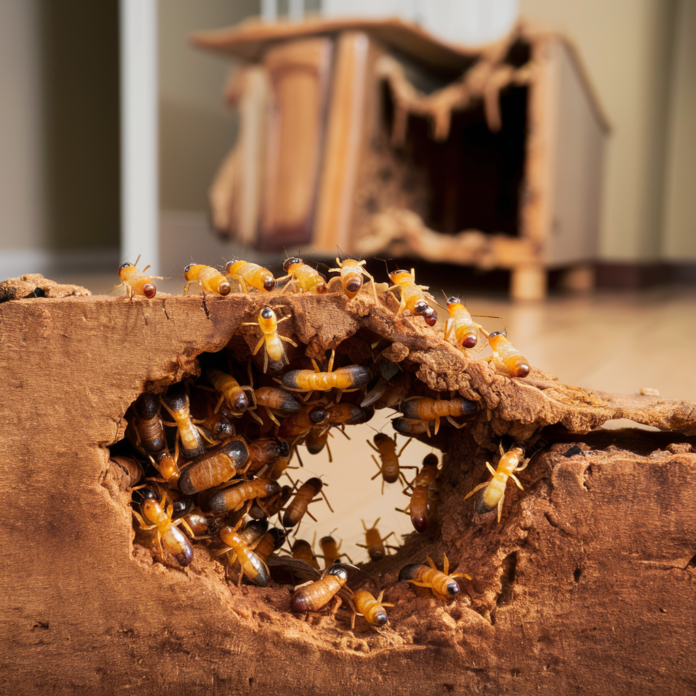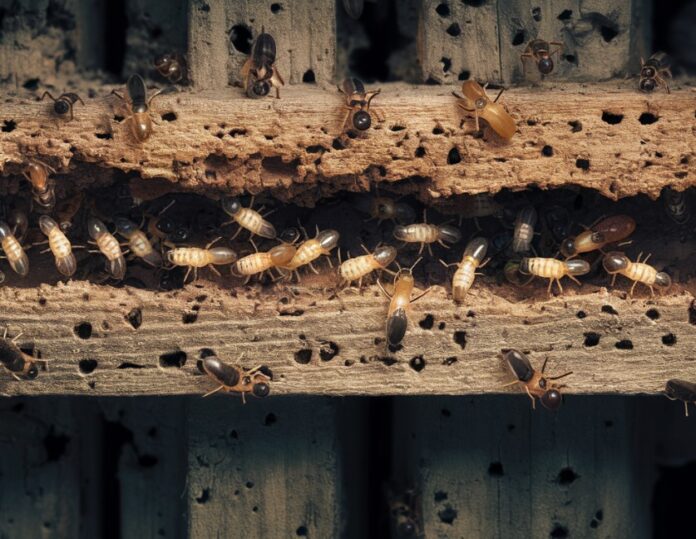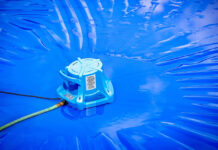Termite detection is crucial for protecting homes from significant structural damage.
Termites can cause extensive and costly damage if not identified and addressed promptly.
Now let us see how we can use different methods to detect them.
Types of Termites
To know how to detect them, we must know different types.
Subterranean
Subterranean termites are among the most destructive termite species. They live in large colonies underground and build intricate mud tubes to access above-ground food sources.
These termites thrive in environments with high moisture levels and can quickly cause significant damage to wooden structures.
Subterranean variants are prevalent in most regions but are especially common in the southeastern United States, where the climate is warm and humid.
Effective control methods, such as termite fumigation, are often necessary to eradicate these pests and protect homes from their extensive damage.
Formosan
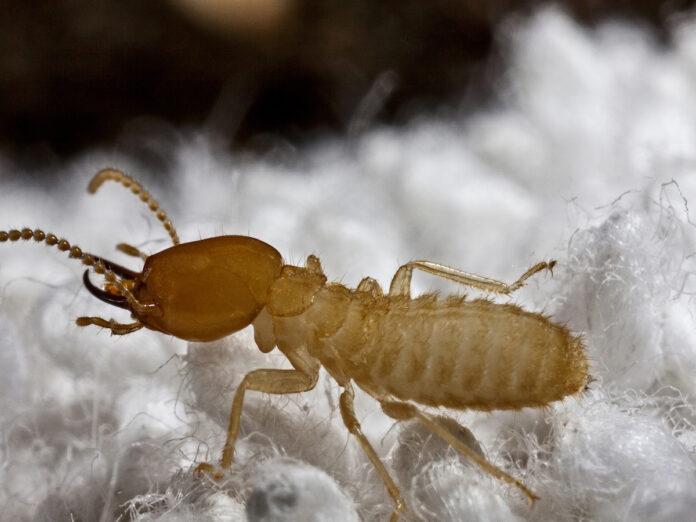
Formosan termites, originally from Asia, have become a severe problem in the United States, particularly in the Gulf Coast states. These termites are known for their aggressive behavior and large colonies, which can number in the millions.
Formosan termites can chew through wood, flooring, and even wallpaper, causing extensive damage in a short amount of time. They prefer warm, humid environments and are often found in coastal areas.
Drywood
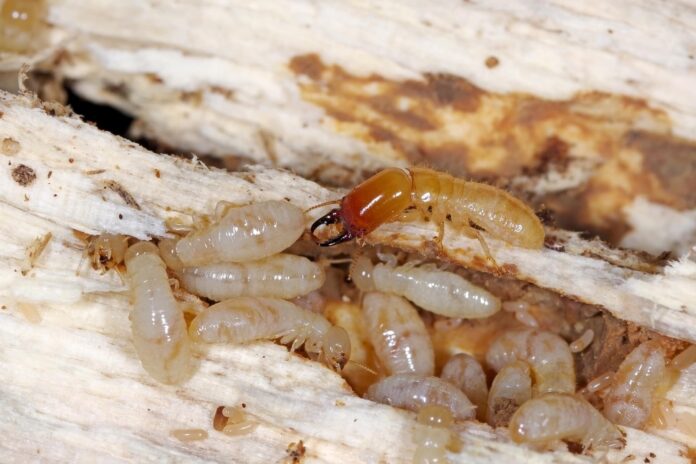
Drywood termites, as their name suggests, infest dry wood and do not require contact with soil. They can live inside the wood they consume, making them difficult to detect until significant damage has occurred.
Drywood termites are commonly found in coastal regions and the southern United States. Unlike subterranean and Formosan termites, drywood termites create small, hard pellets as they consume wood, which can be a telltale sign of their presence.
Preferred Environments
Termites thrive in environments that provide ample food and moisture. High humidity and poor ventilation areas are particularly attractive to termites, as they require moisture to survive.
Damp wood near foundations, such as wet wooden beams or siding, provides an ideal food source.
Mulch and landscaping materials placed close to the house can retain moisture and offer easy access for termites.
Piles of firewood or lumber stored near the structure also serve as a convenient food source, attracting termites to the area.
Identifying Signs of Termite Infestation
Now that we know this, we must take a look at the signs of infestation.
Visual Signs
Detecting termite infestations early can save homeowners from costly repairs. Mud tubes, which they use to travel between their colony and food sources, are one of the most common signs.
Flying swarms of termites, especially near windows and doors, indicate the presence of a nearby colony.
Damaged wood, which may appear hollowed out or have a honeycomb pattern inside, is another clear sign.
Bulging floors, ceilings, or walls can also indicate damage, as can small holes and droppings, which drywood termites leave behind.
Audible and Odor-Producing Clues
In addition to visual signs, homeowners can also detect termites through audible and olfactory clues.
Clicking sounds coming from walls or ceilings can indicate termites at work, as they communicate and chew through wood.
A musty odor, similar to mildew or mold, may also be present in infested areas, indicating a termite colony’s presence.
DIY Termite Detection Strategies
Regularly inspecting the exterior of your home can help detect early signs. Look for mud tubes along the foundation, walls, and other structures. Check for damaged or hollow-sounding wood, particularly in areas where wood meets the soil.
Inside your home, inspect wooden structures, such as beams, floors, and walls, for signs of damage. Look for small holes, frass (termite droppings), and any unexplained bulging or blistering of paint.
Crawl spaces and basements are particularly vulnerable to infestations due to their proximity to soil and potential for moisture. Inspect these areas thoroughly for mud tubes, damaged wood, and moisture issues.
Although attics are less likely to have moisture issues, they can still be vulnerable to dry wood termites. Inspect wooden beams and rafters for signs of damage or droppings.
Inspecting your yard can also help detect activity. Check for mud tubes on fences, sheds, and other wooden structures. Look for signs of damage in trees, stumps, and landscaping materials.
Advanced Detection Methods
If the problem is bigger than it seems at first, you must look for some advanced detection methods.
Professional Inspection Techniques
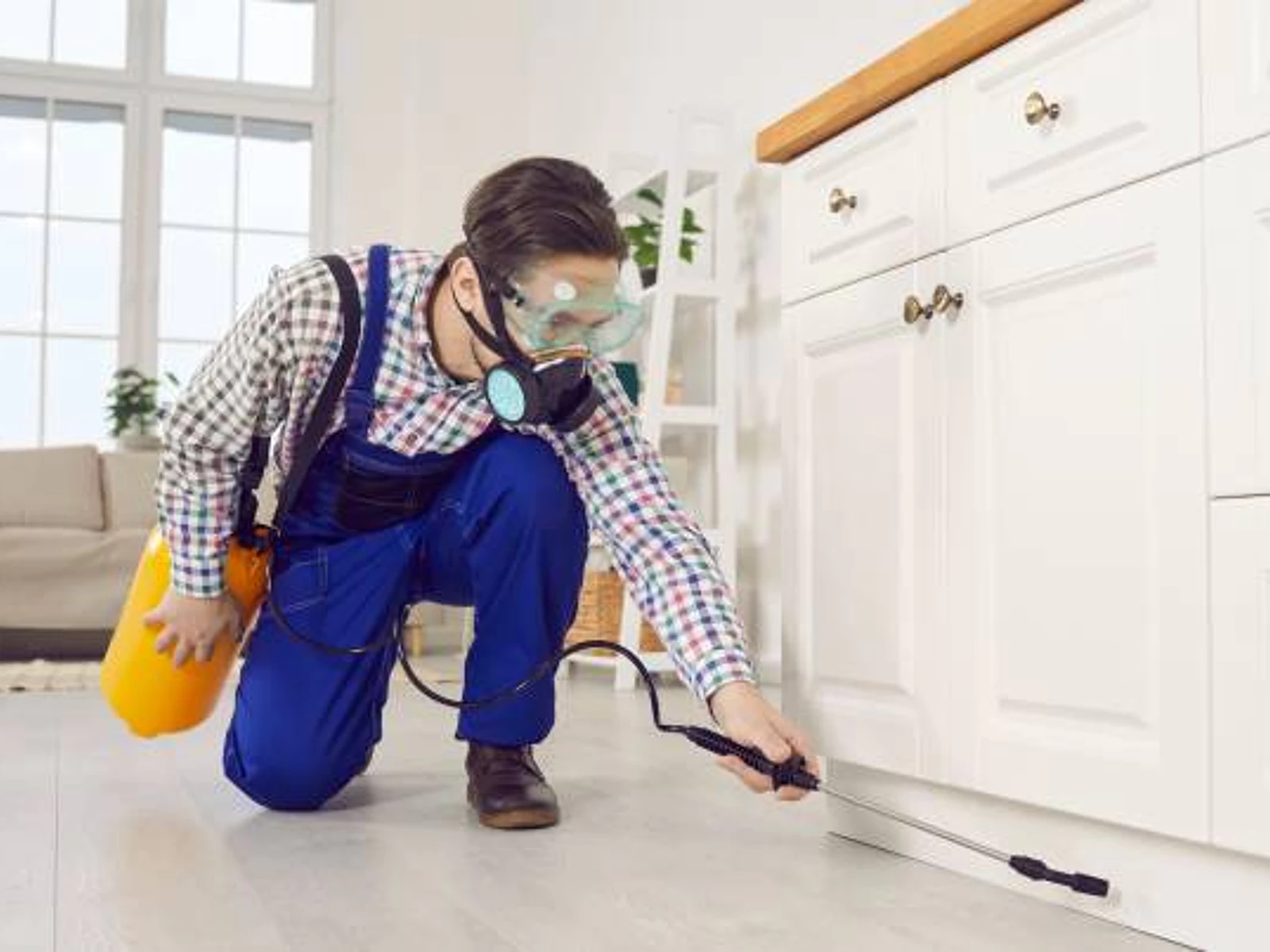
Professional pest control companies use advanced techniques to detect termite infestations. Moisture mapping identifies areas with high moisture levels that are attractive to termites.
Probing and tapping wooden structures can reveal hollow or damaged wood, indicating termite presence.
High-Tech Detection Tools
Several high-tech tools are available for detecting termites. Acoustic emission detectors pick up the sounds of termites at work.
Borescopes allow inspectors to see inside walls and other hidden areas. Infrared imaging detects temperature differences that indicate termite activity. Microwave technology can detect termites through walls.
Trained dogs can sniff out termites, providing a highly accurate detection method.
DIY vs. Professional Termite Prevention
Weighing DIY and professional prevention is not as straightforward as it may seem. Here are main things you need to know.
Cost-Effectiveness of DIY Methods
DIY termite detection and prevention methods can be cost-effective but require regular maintenance and vigilance.
Common DIY methods include regular inspections, using termite-resistant materials, and applying over-the-counter treatments.
While these methods can be effective for minor infestations, they may not be sufficient for severe cases.
Efficiency of Professional Services
Professional pest control services offer comprehensive inspection processes and use specialized tools and techniques that are often more effective than DIY methods.
Professionals can provide ongoing maintenance and monitoring, ensuring that termite problems are detected and addressed early.
The cost of professional services can be higher, but the investment can save homeowners from extensive and costly repairs in the long run.
Non-Chemical Termite Control Methods
If you are looking for non-chemical methods, take a look at these:
Heat Treatment Options
Heat treatment is a non-chemical method that involves raising the temperature of infested areas to a level lethal to termites.
This process can be highly effective, but it requires specialized equipment and professional application.
The pros of heat treatment include its eco-friendliness and lack of chemical residues. However, it can be expensive and may not penetrate deeply into large infestations.
Biological Control Strategies
Biological control involves using natural predators, such as ants or parasitic wasps, to control termite populations.
Beneficial nematodes and fungi can also be introduced to target termites. These methods are environmentally friendly but may take longer to show results compared to chemical treatments.
Summary
Early detection and prevention are crucial in protecting your home from termites. Effective termite detection methods, whether DIY or professional, can save homeowners from extensive damage and costly repairs. Homeowners should invest in regular inspections and preventive measures to ensure long-term protection against these destructive pests.
